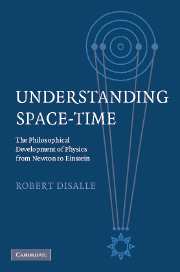4 - The origins and significance of relativity theory
Published online by Cambridge University Press: 22 September 2009
Summary
General relativity once seemed to be philosophically clear. Physics, according to the logical positivists, had come together with the leading ideas of epistemology, metaphysics, and the foundations of geometry into a single coherent picture – something that had not happened since the philosophy of Kant. In Kant's case, however, what united Newtonian physics, Euclidean geometry, and the critical philosophy was a naive conception of mathematics as a creature of sensible intuition. That conception was, as we saw, overthrown by nineteenth-century ideas: the emergence of non-Euclidean geometry, the rise of conventionalism, and, in general, the separation of formal mathematics from intuition. To the positivists, general relativity was no more or less than the synthesis of these post-Kantian ideas with an empiricist view of science.
The positivists' notion now seems to be as naive as Kant's. But this is not because they were utterly misguided about the philosophical significance of relativity. Rather, it was because they misunderstood the philosophical relations between relativity and what came before it. They could not fully understand the nature of the radical change that Einstein effected, as long as they failed to appreciate the essential philosophical continuities between his theories and those of Newton. They could not see a satisfactory alternative to Kant's theory of the synthetic a priori, as long as they were fixed on the idea of arbitrary convention.
- Type
- Chapter
- Information
- Understanding Space-TimeThe Philosophical Development of Physics from Newton to Einstein, pp. 98 - 152Publisher: Cambridge University PressPrint publication year: 2006

